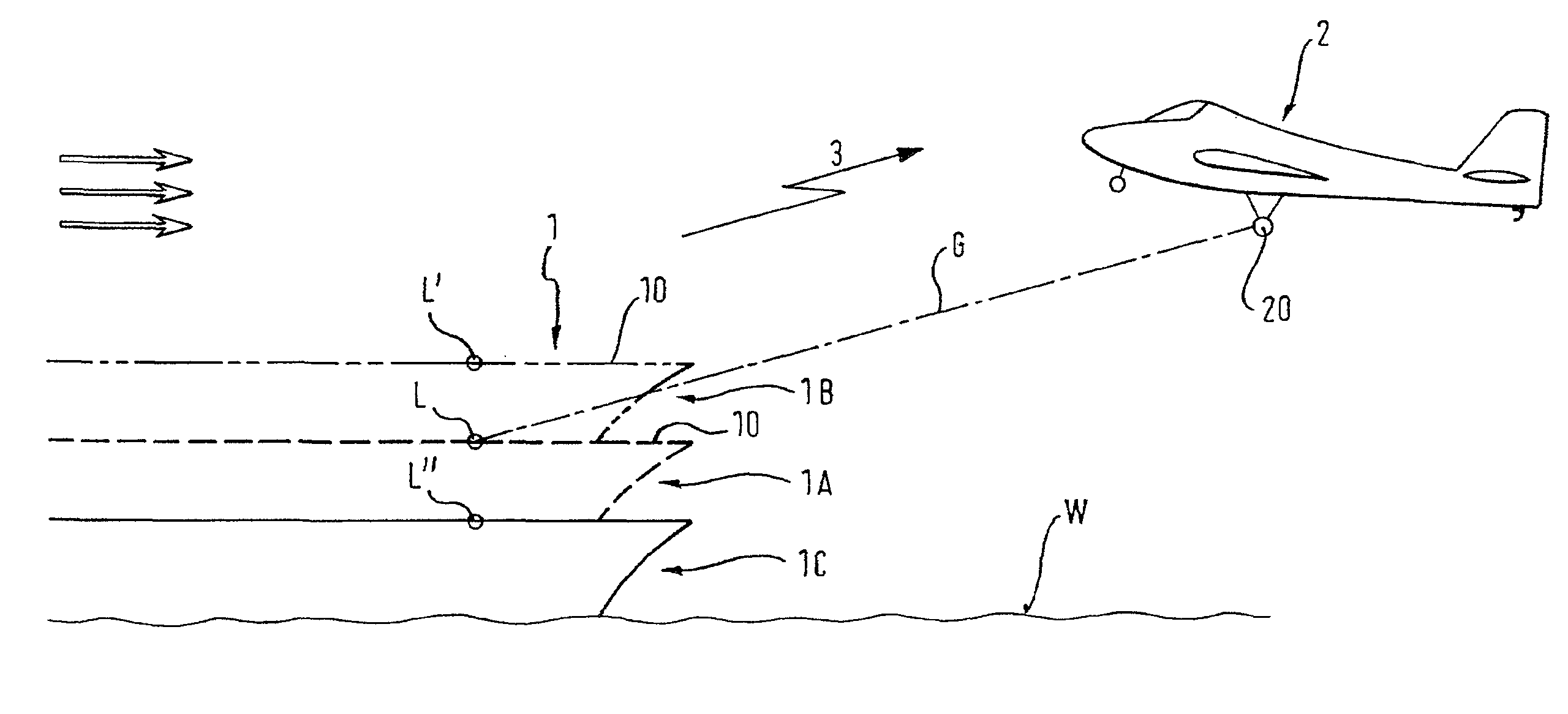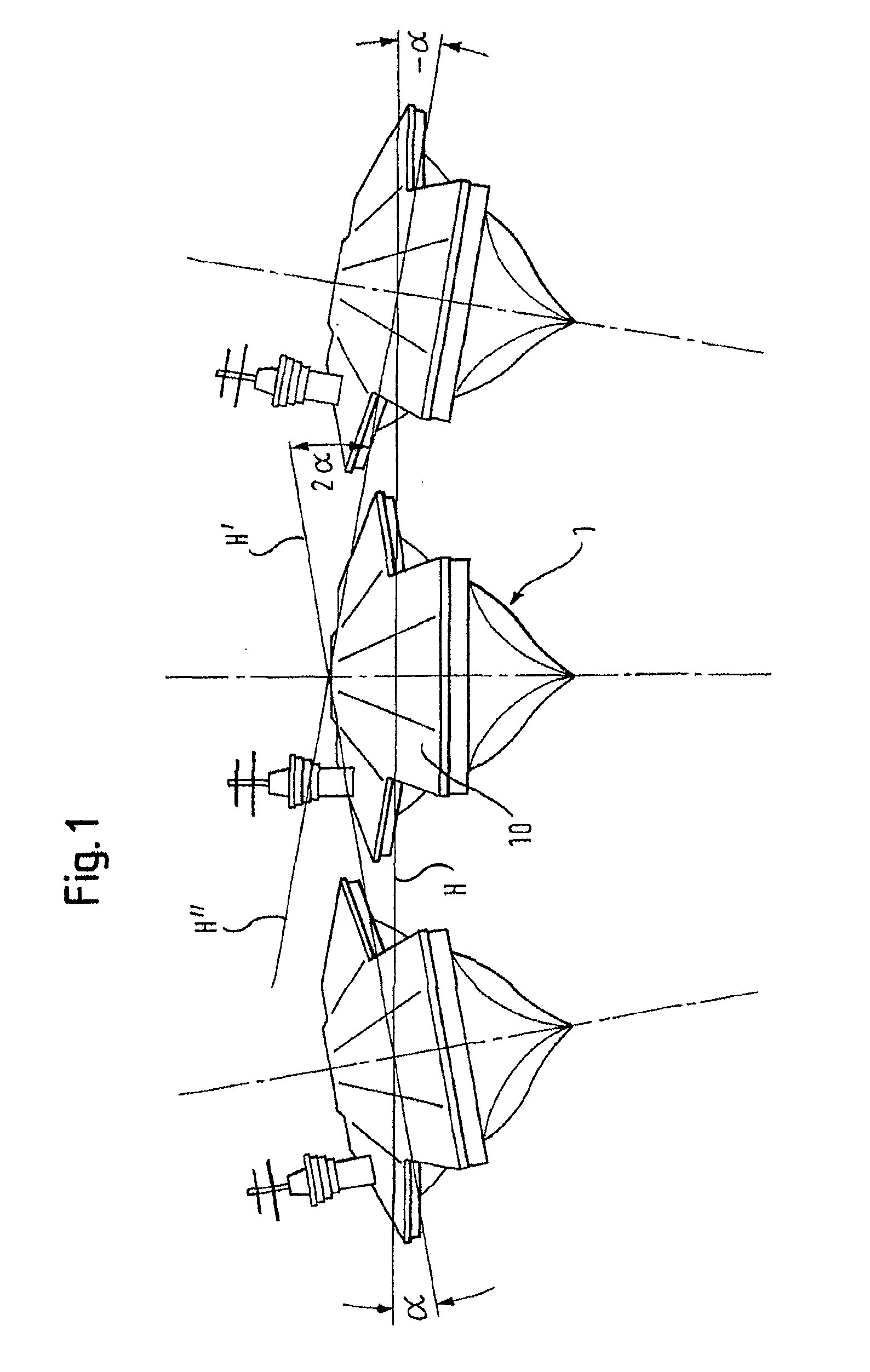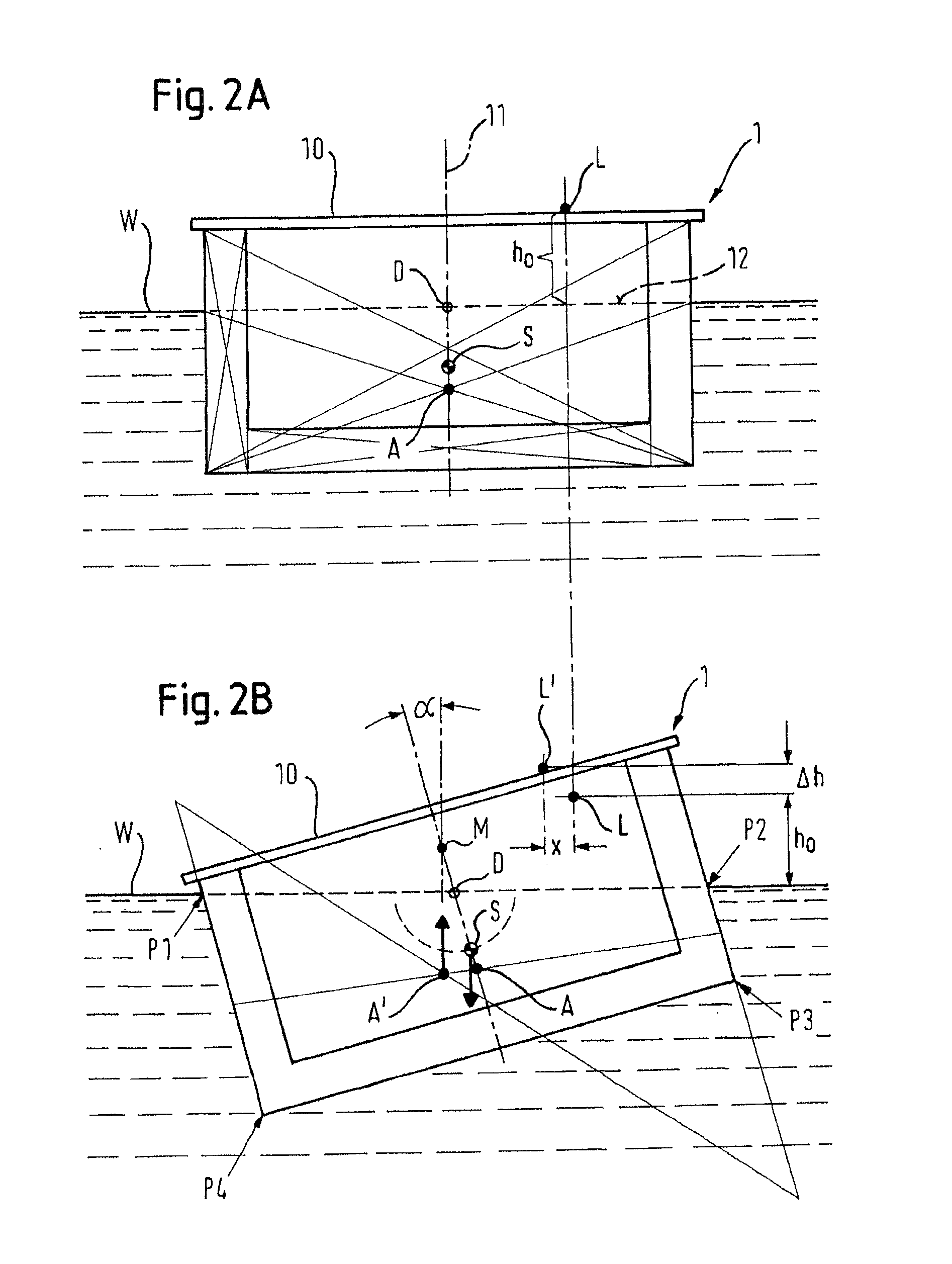Procedure for Automatically Landing an Aircraft
a technology for landing aircraft and aircraft, applied in simultaneous traffic control systems, process and machine control, instruments, etc., can solve the problems of difficult landing of more difficult for pilots of manned aircraft, and difficulty in landing aircraft on a floating landing platform. the effect of facilitating the course of the aircraft in the approach and reducing the influence of cross wind
- Summary
- Abstract
- Description
- Claims
- Application Information
AI Technical Summary
Benefits of technology
Problems solved by technology
Method used
Image
Examples
Embodiment Construction
[0031]FIG. 1 shows three phases of the rolling motion of a ship 1 as a floating platform using the example of an aircraft carrier viewed toward the direction of the bow of the aircraft carrier. In the center representation of the three representations, the ship 1 is in a neutral position; i.e. the roll angle amounts to 0° and the deck 10 of the ship 1, on which the landing runway is situated, is aligned with respect to the rolling axis along a horizontal deck line H.
[0032]In the left representation, viewed about the angle a in the direction of travel, the ship is rolled clockwise (counterclockwise in the representation of FIG. 1, where the ship is seen from the front), so that the starboard side is lowered. The deck line H now extends at an inclination angle α with respect to the horizontal deck line H. In the right representation, viewed in the direction of travel, the ship is rolled counterclockwise about the angle −α, so that the portside is lowered. Now the deck line H″ extends ...
PUM
 Login to View More
Login to View More Abstract
Description
Claims
Application Information
 Login to View More
Login to View More - R&D
- Intellectual Property
- Life Sciences
- Materials
- Tech Scout
- Unparalleled Data Quality
- Higher Quality Content
- 60% Fewer Hallucinations
Browse by: Latest US Patents, China's latest patents, Technical Efficacy Thesaurus, Application Domain, Technology Topic, Popular Technical Reports.
© 2025 PatSnap. All rights reserved.Legal|Privacy policy|Modern Slavery Act Transparency Statement|Sitemap|About US| Contact US: help@patsnap.com



